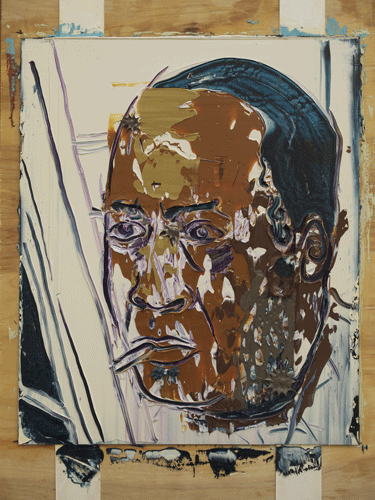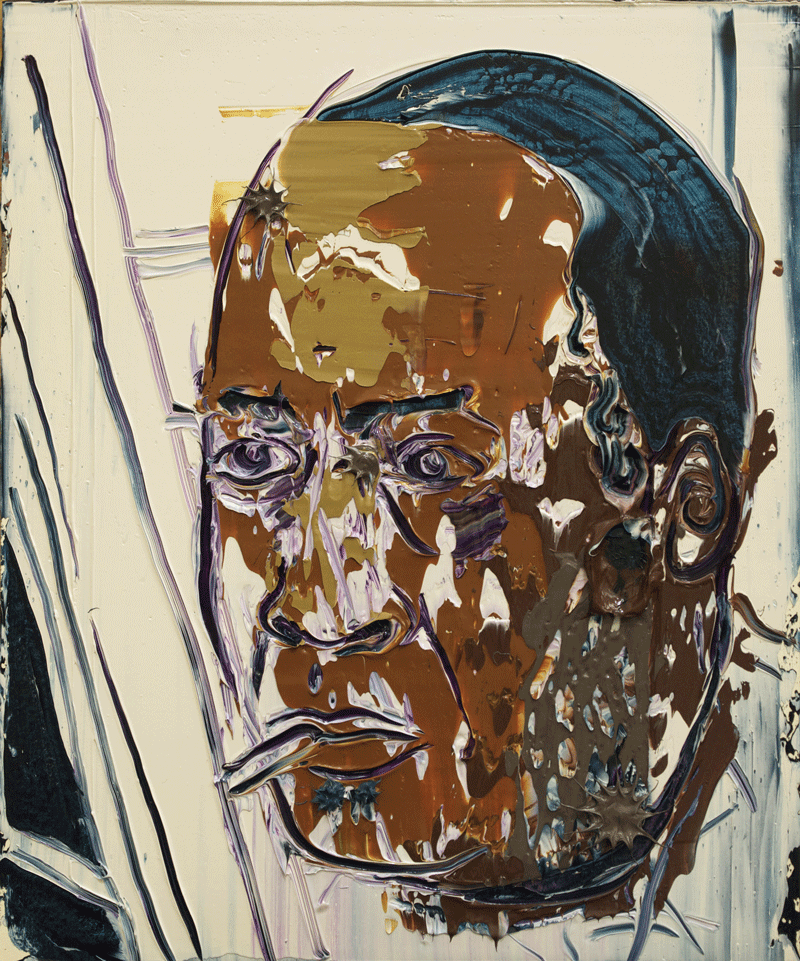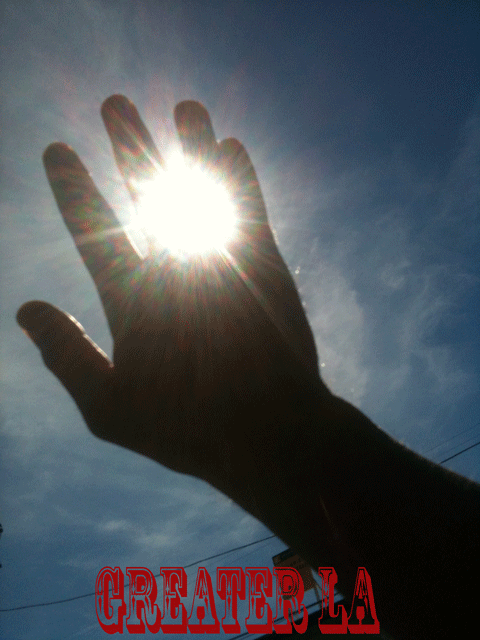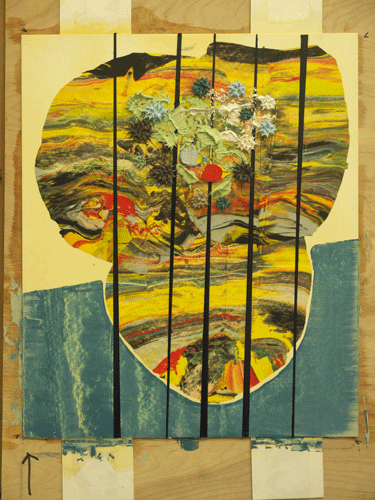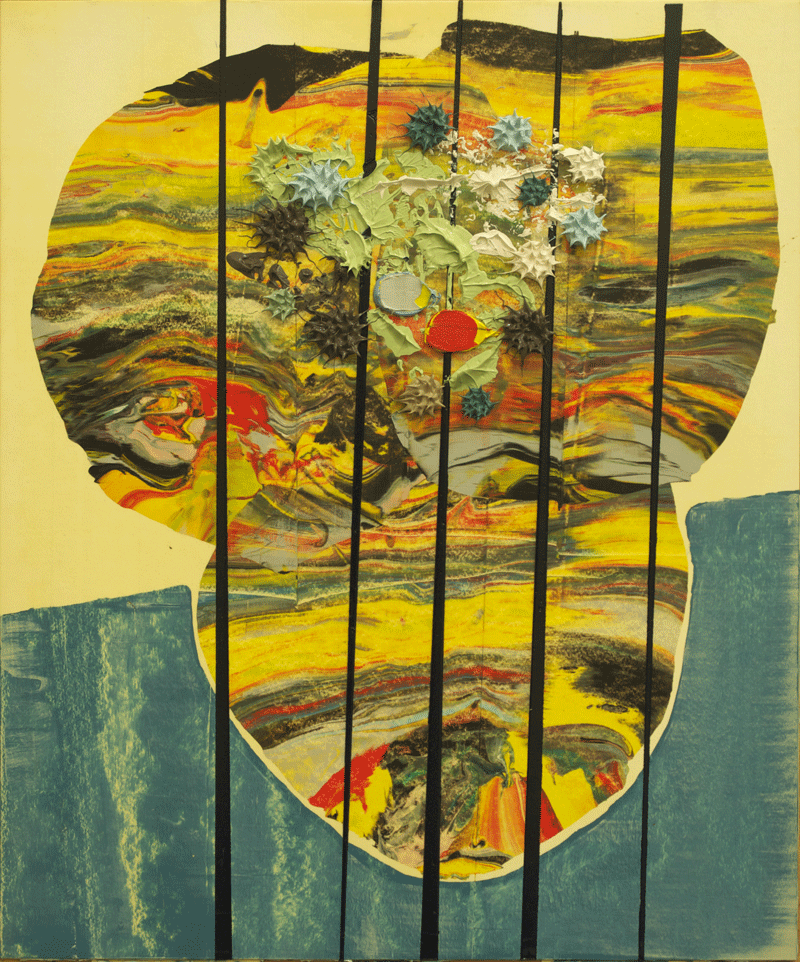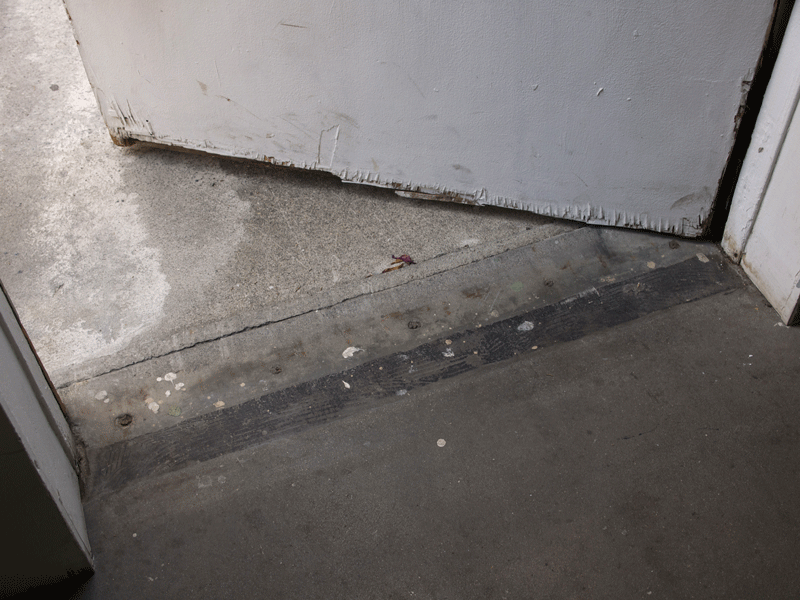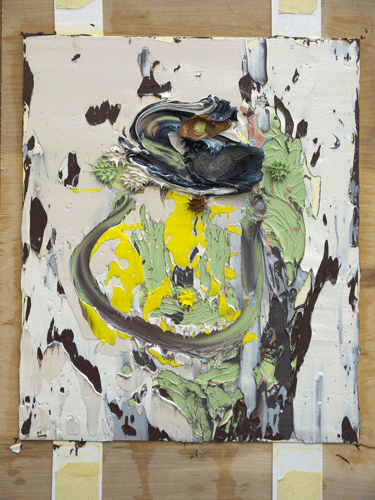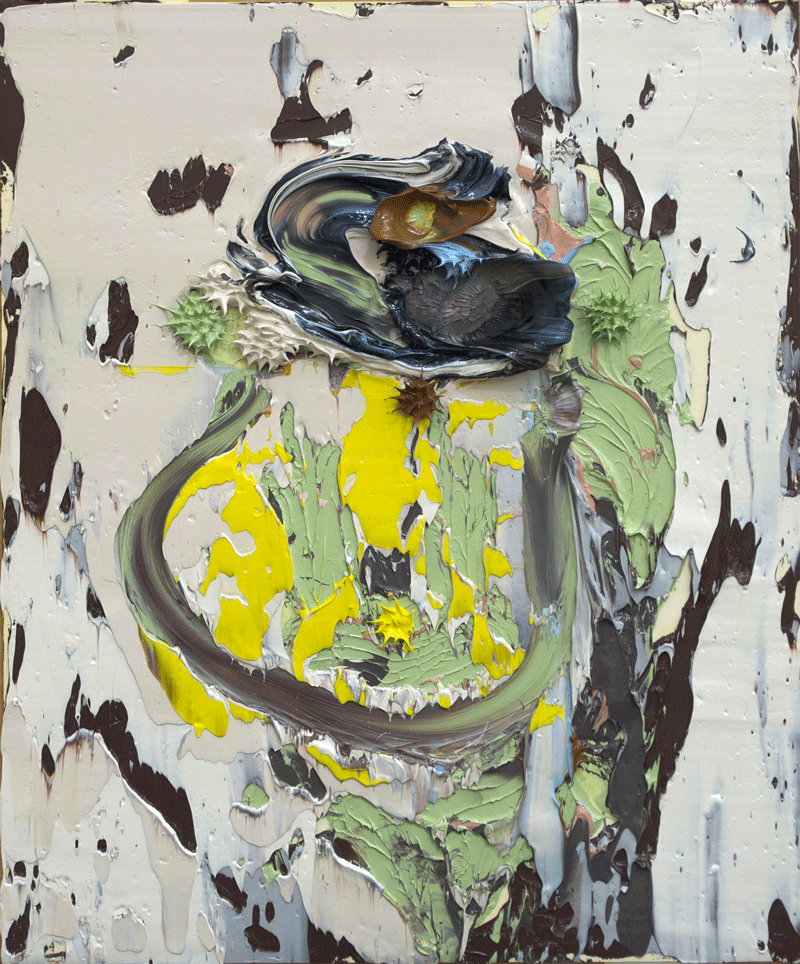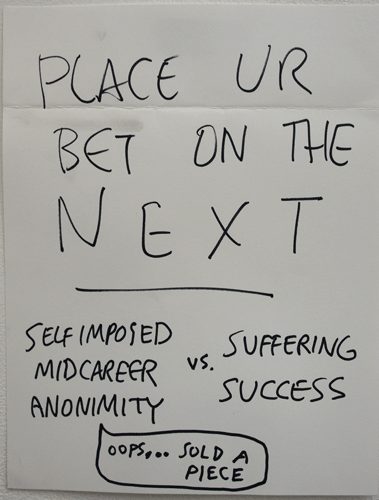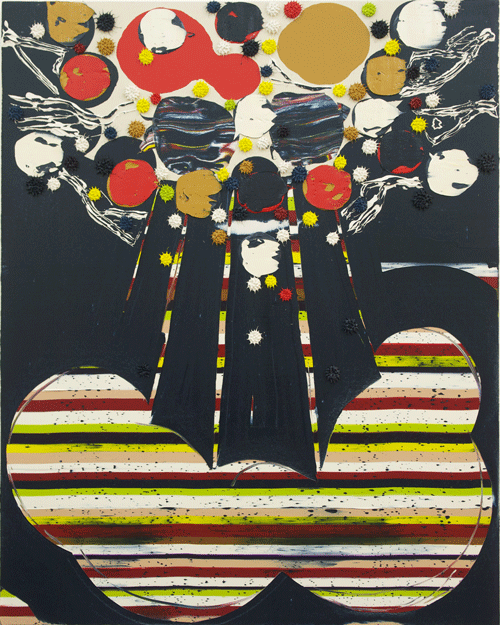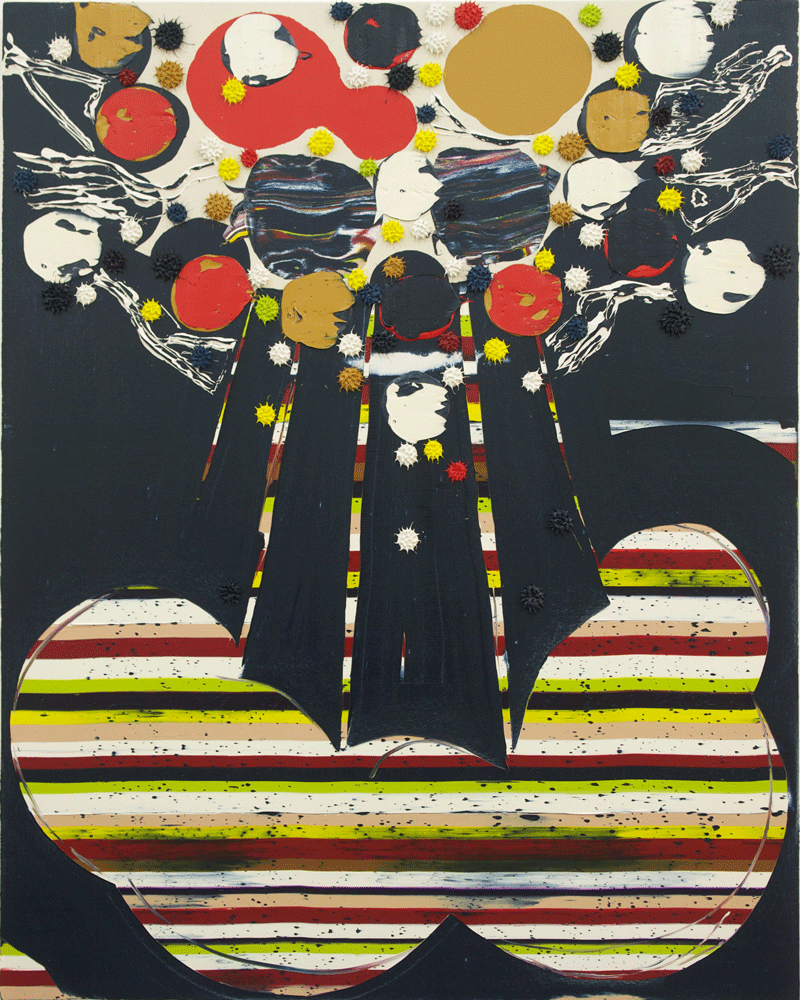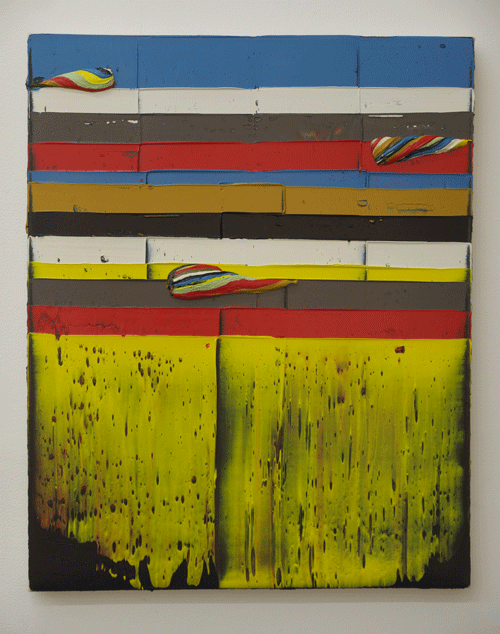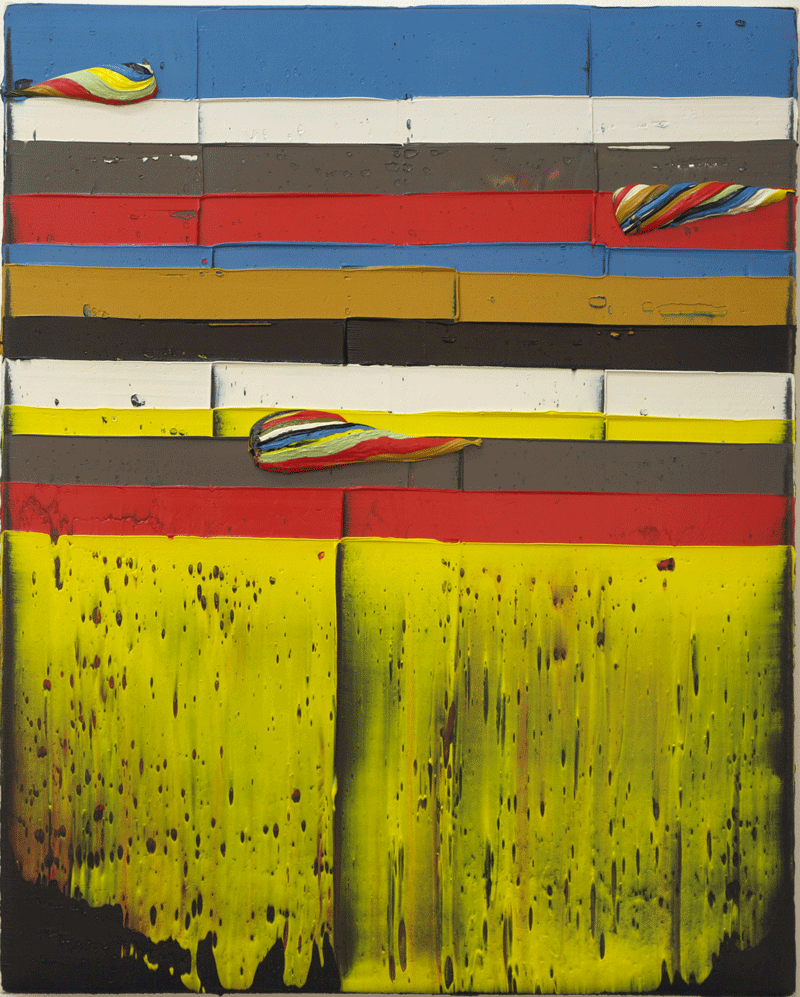April 27, 2011
The Tsunami Stones
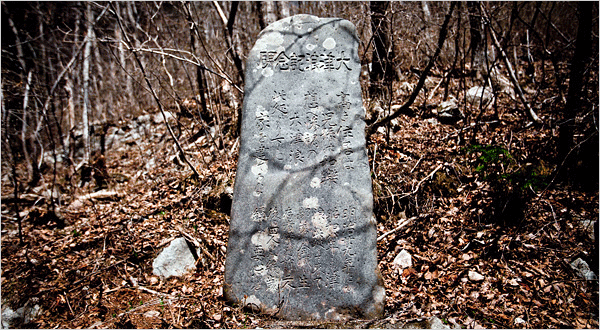
Apropos of the Fukushima Ring, read this article from Martin Fackler in the NYTimes (Foto credit: Ko Sasaki, via BLDGBLOG, an excellent architecture blog by Geoff Manaugh):
Hundreds of so-called tsunami stones, some more than six centuries old, dot the coast of Japan, silent testimony to the past destruction that these lethal waves have frequented upon this earthquake-prone nation.
[snip]
?The tsunami stones are warnings across generations, telling descendants to avoid the same suffering of their ancestors,? said Itoko Kitahara, a specialist in the history of natural disasters at Ritsumeikan University in Kyoto. ?Some places heeded these lessons of the past, but many didn?t.? The flat stones, some as tall as 10 feet, are a common sight along Japan?s northeastern shore, which bore the brunt of the magnitude-9.0 earthquake and tsunami on March 11 that left almost 29,000 people dead or missing.
[snip]
?We need a modern version of the tsunami stones,? said Masayuki Oishi, a geologist at the Iwate Prefectural Museum in Morioka.
April 25, 2011
One day we shall die
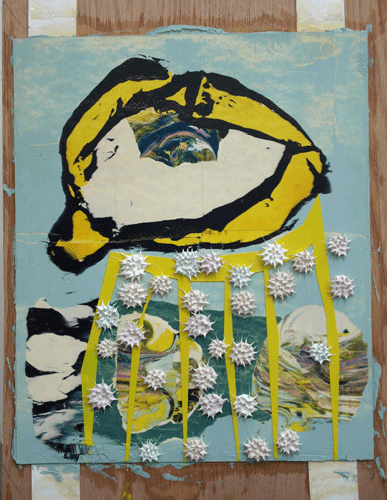
One day we shall die
WOP 6-11
18"x15"
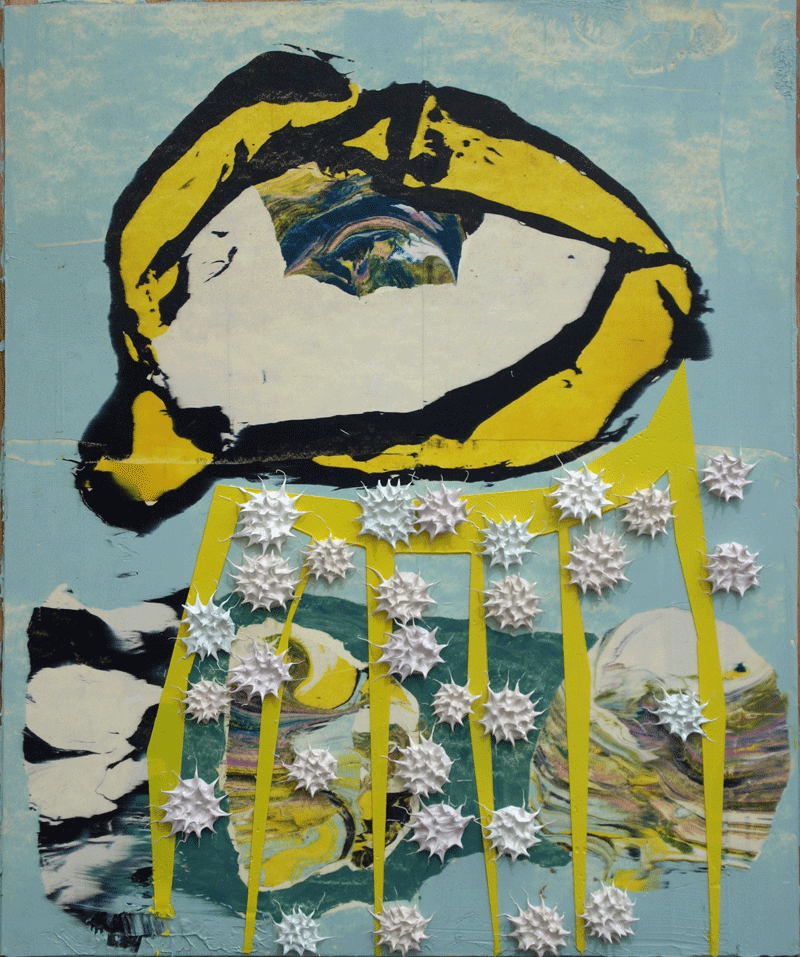
April 22, 2011
Richard Feynman
"Nature uses only the longest threads to weave her patterns, so that each small piece of her fabric reveals the organization of the entire tapestry."
I spent an afternoon with Feynman in the studio today. Both have long running time frames, perfect for an afternoon at work in the studio. These two videos are a fine pair. The one above was Feynman in his prime. The second both humanizes him and reveals just how high a level of a genius he really was.
Highly recommended.
April 21, 2011
How Does Radiation Travel?
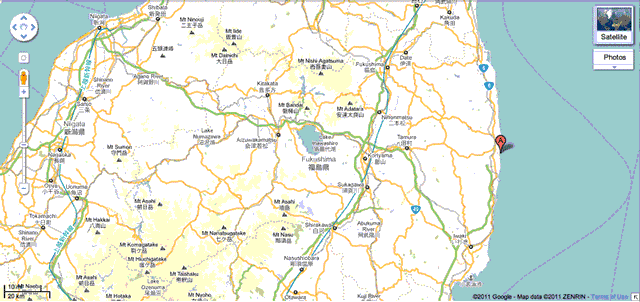
After writing about the Fukushima Ring, and after reading articles like this, I must acknowledge the human cost of such an action as is ring building::
Chief Cabinet Secretary Yukio Edano told a news conference that from midnight on Thursday, people could only go into the zone under government supervision."We will take strict legal measures against those trying to enter the area ... For residents, all I can say is I ask for their understanding so that no legal action will be taken against them."
Anyone breaking the ban can be fined up to 100,000 yen ($1,200) or be detained by police.
TEPCO has said it may take the rest of the year or longer to bring the plant under control.
More than 130,000 people are living in school gymnasiums and other shelters more than a month after the March 11 quake and tsunami that left some 28,000 dead or missing.
"HOW DO YOU THINK WE FEEL?"
"Are you leaving?" one man shouted as Kan and his entourage headed for the door at a Fukushima evacuation center. "We are evacuees. Are you just going to ignore us?"
Kan turned back and apologized, only to be berated again.
"You should bring cabinet ministers here and let them try living here themselves. How do you think we feel? We want you to somehow get the nuclear plant under control," one woman said
As for the human cost, with rounded numbers like 28,000, it's easy to guess that the real number is larger, probably much larger. The true tragedy is the dimension of life lost in the sum total of the disaster. Displacing angst from mourning into outrage against any agency should be considered as ill considered. A great tragedy happened and the people of Japan must build our way out of it. The mindset of building is fundamentally different if not superior to the mindset of grievance. The fate of 130,000 survivors is in the balance and their welfare is an integral part of the reconstruction of the stricken area. This is, I believe, the best first priority for Japan and their friends in the worldwide community.
People who once lived next door to the plant will be displaced for certain, people living in the next closest proximity will have to see what the health effects frame the closest, safest edge of the protection zone. There might be many ways to define this, but any answer has to satisfy the need to protect people from harm.
Here's another recent article:
Katsunobu Sakurai, mayor of Minami Soma, where about half the 71,000 residents lived in areas that are now off-limits, questioned the rationale for the way the evacuation zone was decided.Zing!"It feels like some outsider who doesn't know anything about our geography sat at a desk and drew these circles," Sakurai said. "The zones have zero scientific basis. Radiation doesn't travel in neat circles. Just putting up circles around the plant is unreasonable."
I am one of those circle drawing outsiders. I hope you will note that I had at least refrained about speculating about the design aspect of the wall or sarcophagus. The actual safe zone around the nuclear plant is probably not a perfect circle, and perhaps it shouldn't be abstracted from afar, but then the mitigating aspects of a real boundary would be principally circumscribed by the geographic topography that might shield neighboring communities and not simply derived from the fact that radiation decreases in power the farther in distance it travels from its source. A quick look at the map tells me that Minami Soma has little to no such shielding from the landforms to the north along the coast. Only a rigorous scientific assessment can deliver the best answer to this question.
Meanwhile, fingers twirl a compass.
UPDATE: First, the ring shrank to 12 miles, now it might have disappeared:
Highlighting the differences between Chernobyl and Fukushima, he said people in villages close to the plant in the then Soviet Union were exposed to radioactive iodine that contaminated milk and vegetables.It will be interesting to see how close people can safely live near the site... or better, how people frame the question that will provide the answer."They inhaled first, then they ingested this iodine and this caused the problem," Weiss said. "In Fukushima, the people were evacuated before any release took place, so this is a totally different situation."
Asked what health consequences he expected from Fukushima, he said: "From what I know now, nothing, because levels are so low. In food, people are talking about levels which would give you one millisieverts per year, five millisieverts per year . . . this is nothing where we would expect major health impacts."
April 19, 2011
April 15, 2011
Fukushima Ring
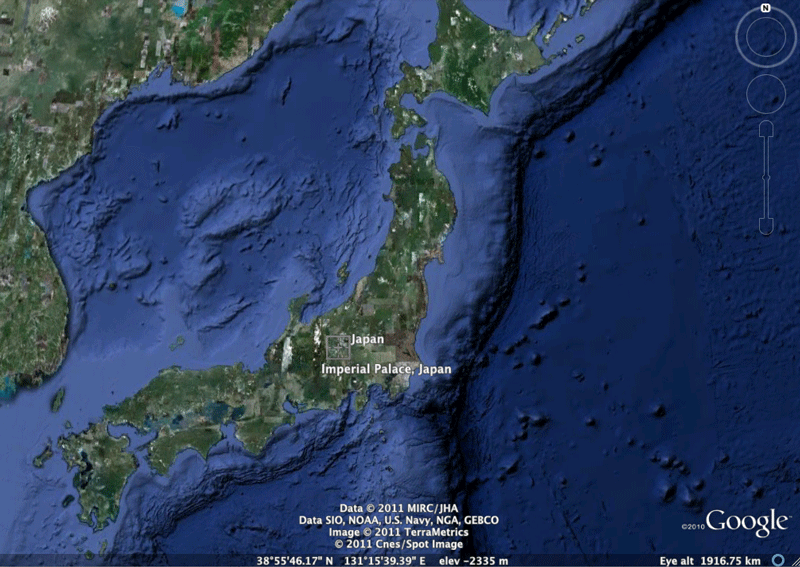
I was thinking of the impact of the Fukushima Ring, the fifty mile safety zone centered on the Fukushima Daiichi Nuclear power plant in Japan.

So I drew the ring on a GoogleMap to see how big it is.
Pretty impressive. In scale to the island, it's a sizable chunk of land. But it is a bite sized chunk after all, since the plant was beside the ocean. Assuming it can be contained, and this is a certain assumption, radiation harmful to life will emanate in rings of less deadly zones, ultimately to a radius that is deemed harmless to human beings. Shipping will have to navigate around this new maritime hazard. Hopefully, sea life will be unaffected with the proviso that Japan will be able to contain the damage sufficiently enough, and there is no reason to think otherwise.

Of course, the methods of graphic representation can enhance or belie the impact of the Ring. This is a huge chunk of land, but it is located in a relatively remote part of Japan (yes, with such a land mass, one could say that nothing is remote, but even so...). With a radius of 50 miles, the length of the boundary on land is about 300 miles. I typed in "300 mile fence" into Google search and got this. Subsequent searches yielded this and of course, this. So, such a feat is possible within these extents. Will Japan build a wall, the Fukushima Wall? Surely the government has a responsibility to delineate this boundary for the public at large. What could such a fence or wall or (I resort to the thesaurus) or enclosure or barricade or stockade or palisade... look like?
Designs of the ring, a wall.
I remember a school assignment during my years teaching architecture at Woodbury University in Burbank. It was the very same kind of nuclear hazard barrier. The challenge was to design exactly this kind of structure. That assignment specified the context of nuclear waste storage in Nevada. Students immediately dove into the emotional fear and drama of the subject. I remember many designs over designed, some with trenchant figuration, others trying to embody the spirit of the threat of radiation in complex and dizzying compositions of structure. Armchair designs in pipe smoke floated from the visiting jurists at the critique. Just as I heard yesterday when describing the Fukushima Ring to my pals and when asked what they would suggest for the design of the wall, came fanciful and humorous and rascally sarcastic ideas. A huge dome. Scenes from scifi movies were evoked. A massive ringed pile of bones. Should it be invisible? Should it be monumental? It was a lark of a design problem then, and here we are with something concrete, real and present.
What would you suggest for the design of the Fukushima Wall?
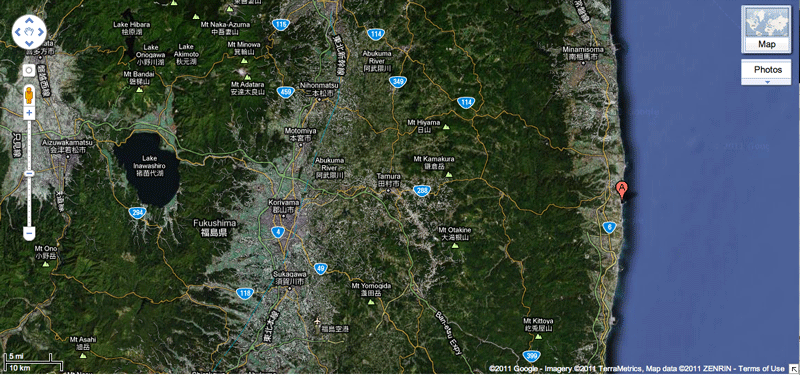
The towns of Tamura and Iwaki are within this circumference. Will they have to be abandoned? I couldn't find much online about topographic elevations above sea level, but there was a map of Tamura that noted a crest of a mountain at 700 feet, as far as I could tell. The Hollywood sign here in Los Angeles is over twice that high. So the best we might have here are hills that separate the valley dotted by Fukushima, Koriyama and Sukagawa. These hills will provide a bit of a shadow for these communities, but not by much, apparently. What Japan loses are the summer resort and vacation destinations along the coast.
...for the next, hundred years? I googled:
Over the long term, the big threat to human health is cesium-137, which has a half-life of 30 years.At that rate of disintegration, John Emsley wrote in ?Nature?s Building Blocks? (Oxford, 2001), ?it takes over 200 years to reduce it to 1 percent of its former level.?
It is cesium-137 that still contaminates much of the land in Ukraine around the Chernobyl reactor. In 1986, the plant suffered what is considered the worst nuclear power plant accident in history.
Scary stuff. I got confused between the numbers thirty and two hundred. How many years will it be until the site can recover?
I googled:Most worrisome of all is plutonium-239 ? for a number of reasons. First of all, the vast majority of a fuel rod is made of plutonium, which means there's just more of it in play. What's more, says Helfand, "It's extraordinarily toxic." Plutonium exposure usually comes from inhalation rather than ingestion, so it's mostly associated with lung cancer. What's more, plutonium's half life is 24,000 years, which means anything released in Fukushima today could be around at dangerous levels for up to half a millon years.
Whoa.
Maybe many thousands of years?
Well.
Maybe that would be an indication as to the question of the proper degree of monumentality of the design?
They could physically remove affected material over time and cleanse the site with radiation detection equipment. (Do scientists still use geiger counters, or is it another technology with another name?) Imagine a design for a handheld vacuum cleaner, one merged with a geiger counter. Or a Roomba, something cuddly that sucks up radioactive particles. A sip, a puff in reverse, a slurp of hot soup. The little robot could waddle around sucking up radioactive particles here and there all day and by night it vomits it's stomach into a hazard disposal bag and goes to sleep. [End Digression] Is it possible to purify Fukushima eventually? I'll believe this is so until I encounter evidence to the contrary. Right now, for me, the time frame to sweat out the danger is between 30 and 24,000 years.
Then I read this, and I am slightly reassured. There's a lot of hysteria out there, better to get your attention, dear reader.

What is the reality of the radiation zone in Fukushima? Just how dangerous is it? How close can human beings live near it?
And finally in this missive, a remarkable video of two guys (Tetsuo Jimbo for videonews.com) trying to see how close they could come to the stricken reactor. Amazing, mournful stuff. It's sad to see the animals running feral. Time 09:15 makes me want to cry. Seriously.
While I am grateful for these two knuckleheads journalists for pulling off such a stunt report, notice that these guys just drove a car right up to the plant without being stopped, or at least this is what the video suggests. I'm glad that they informed the world about the current situation at Fukushima, but it might be good to limit free access to the site in the future.
Like a wall of some kind.
*
*
*
The long-term scope of Fukushima's leaks, then, still depends upon not only how much radiation escapes, but also what kind. If the majority of the radioactivity is short-lived, it may be possible to simply wait for it to decay away. Iodine-131, one of the major isotopes detected from Fukushima, will be largely gone after 10 half-lives (80 days total)?decayed to less than 0.1 percent of the original. Cesium (Cs-137), on the other hand, has a 30-year half-life. High concentrations of Cs-137 could force Japan to cordon off and clean up the affected areas, as happened at Chernobyl?a process that could take years to decades, depending on the level of contamination. Buildings contaminated with short-lived nuclides may be reoccupied after a brief wait, while those with longer-lived radioactivity may require either cleanup or demolition. That's a decision for another day.A sarcophagus.The same goes for the fate of the plant. The last of Three Mile Island's residual fuel was removed from the reactor in 1993, but the structures will remain standing for years, until radiation levels drop to the point where work can be done there safely. At Chernobyl, the reactor was encased in a concrete sarcophagus to contain the radioactivity. And at Fukushima, we just don't know yet what actions will be taken to contain the radioactivity, but they will likely include a combination of cleanup, eventual demolition of the affected reactors, and building temporary containment structures such as the Chernobyl sarcophagus.
Design ideas, anyone?
Greater LA
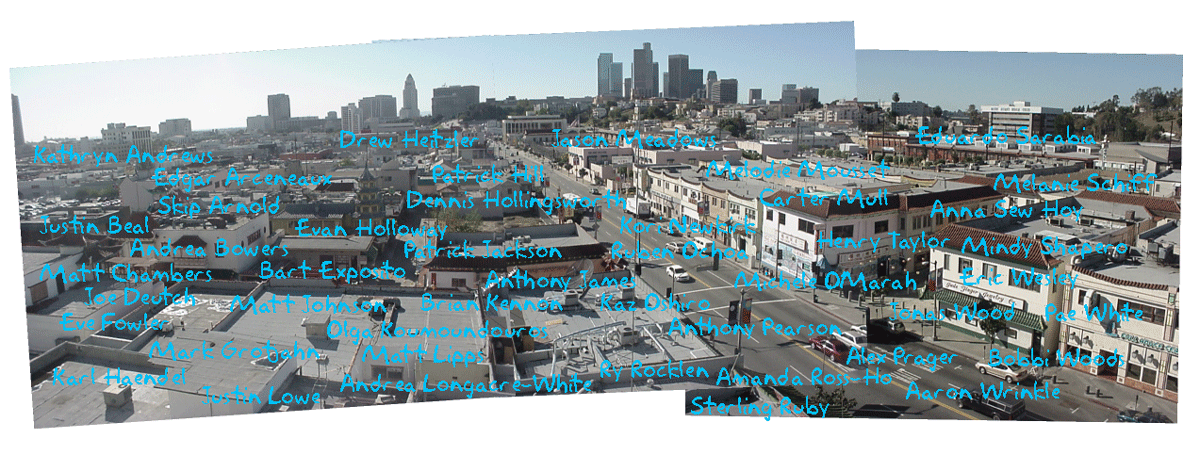
In New York City. May 14th, 2011.
I'm in good company.
A clickable link for all the names is here.
FREE AI WEIWEI
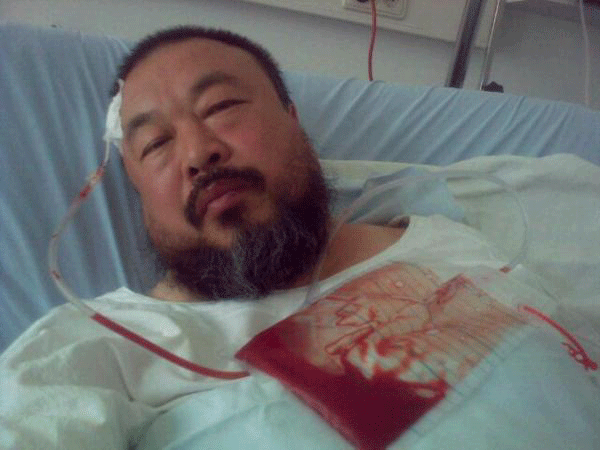
Artist Ai Weiwei, a Chinese artist educated in New York, is still under arrest, whereabouts unknown:
The outspoken Ai, 53, was the artistic director for the ?Bird?s Nest? Olympic Stadium, but he later turned critical of the Games. He has been arrested before: In 2009, in the western city of Chengdu, Ai was beaten so badly that he required surgery to have blood drained from his brain. Late last year, he was stopped at Beijing?s airport from flying to South Korea because authorities feared he might go to Oslo to attend the Nobel ceremony for Liu. Liu is in prison, and his wife, Liu Xia, is under house arrest.The latest news in The Economist, Princelings and the goon state:
?THERE are some sour and smelly literati these days who are utterly abominable,? a retired military officer reportedly told a recent gathering in Beijing. ?They attack Chairman Mao and practise de-Maoification. We must fight to repel this reactionary counter-current.? At the time, two months ago, the colonel?s crusty words might have had the whiff of a bygone era. Today, amid a heavy crackdown on dissent, they sound cruelly prescient. One of the most prominent literati, Ai Weiwei, is among dozens of activists the security forces have rounded up recently. Mr Ai, an artist who is famous abroad, was detained in Beijing as he attempted to board a flight to Hong Kong on April 3rd. There has been no official confirmation since of his whereabouts. Officials say that he is being investigated for unspecified economic crimes, but the Global Times, a Beijing newspaper, warned that Mr Ai had been skirting close to the ?red line? of the law with his ?maverick? behaviour. In other words, he had apparently provoked the Communist Party once too often.
April 14, 2011
irrational, purely visceral
Barcelona Bullfight from Patrick Bullion on Vimeo.
This link sent me into thoughts about bullfighting again. I searched Google for videos of Jos? Tom?s, and this is the best one I found, his performance in Barcelona that I missed back in 2008.Here is a snip taken from the Michael Kimmelman article I posted back in 2009, in this part of the article, Kimmelman is talking to Cayetano Rivera:
I pressed him about killing the bulls.He paused. ?I?m not a hunter, and the first time I killed a bull it didn?t feel good,? he said. ?It was shocking. Nobody loves the bull more than the bullfighter, that?s for sure. But it?s a responsibility, and it wouldn?t be fair to have someone else kill the bull. It?s only fair that I risk my life doing it.
?Today, people have so many other ways to entertain themselves ? movies, Internet, sports, television ? and maybe the interest in bullfighting is because there?s nothing else that offers so much reality,? he said. ?It?s like what my grandfather told my brother, ?Some bullfights are so important that your life doesn?t matter.? And it sometimes happens when you are completely given over to the moment in the ring that you really don?t care, you just forget about your body. And it?s incredible.?
It occurred to me then that he sounded like an artist. Bullfighting survives its own social anachronism not just because of its machismo mythology, but also because of an irrational, purely visceral response that fans and bullfighters like Rivera share. Being irrational, it defies normalization, remaining something exotic even in Spain. And in the end this describes the way art tends to operate. That?s not a moral judgment. It merely helps explain the eloquence that some people find in what others see as utterly worthless and contemptible..
Here's what I think of when the subject of bullfighting arises. I think of deep human history, a village with crops and animals to support it. One day, the first day of its kind, the elders send the youth to go out and kill the bull to feed the village, its time has come. How could they do this? Hundreds of pounds of bristling killer instinct. Animals like this were on the open range, techniques of stalking and overcoming were of no use in this situation. So, they constrained the animal in an enclosure. They sapped its energy in stages to bring it closer to the human arena where one of the lads, no doubt the bravest among his peers, delivered the killing blow in close quarters. Without a doubt, the contest was formalized into a system of limitations (a type of tradition) and within its constraints, art emerged.
In a world that continuously promised the immanence of the eschaton; a reminder of our fragility, our all-too-humanness, of hubris; a vivid sense of how far we fall from perfection is what civilization seems to need at the moment. To witness a fleeting moment of perfection in the midst of a constant mortal striving that almost always falls short, this is what bullfighting, and all sport, and all art, seems to be about to me. This is how I make sense of it.

Silent Art Auction in Kiyosumi
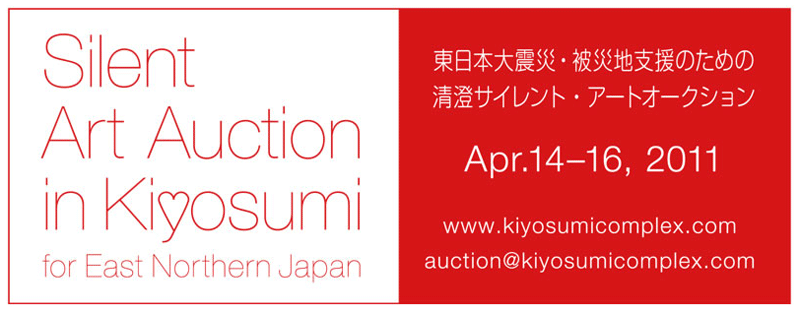
Tomio Koyama Gallery and other galleries in Kiyosumi are planning a silent charity auction today and tomorrow,
donating the entire sales result to the Japanese Red Cross and therefore to the earthquake victims affected in NorthEastern Japan. It's a huge effort, and a great way for people to come together and do something about the recent disaster in a productive way. Here is their presentation from the auction site:
We offer our deepest prayers to all those who lost their lives in the unprecedented crisis of the North Eastern Japan earthquake and its ensuing aftermath, as well as our sympathy to the survivors and their families, and to all those whom were involved.At the Kiyosumi Gallery Complex we will hold a silent charity auction in order to gather donations to aid the areas affected by the earthquake which struck the North Eastern region of Japan. The galleries will jointly mount an exhibition of participating artists? work which will be open for bidding. All proceeds from the sales will be donated to the Japan Platform.
http://www.japanplatform.org/The auction is structured solely on an open bidding basis in which those wishing to participate will each fill out an ABSENTEE BIDS FORM.
There will be no competitive bids. The individual whom has placed the highest bid will be the successful bidder. Only the successful bidder whom has placed the highest bid will be contacted.
(Please note in advance that we will not contact all participants with regards to the succession of their bid)For further details please refer to the ?Auction Terms and Conditions.?
Bids may be placed directly at the exhibition site (Tomio Koyama Gallery) where the works will be on display, via this website, and through fax.
(For further details please refer to ?Absentee Bids?)The works by participating artists will be exhibited throughout the following dates.
Exhibition Location: Tomio Koyama Gallery
12 noon ? 19:00 pm, Thursday 14th, Friday 15th, and Saturday 16th April, 2011
1-3-2-7F (R Floor), Kiyosumi Koto-ku Tokyo
Tel: 03-3642-4090
Opening hours: 12 noon - 7pm
April 13, 2011
Greater LA
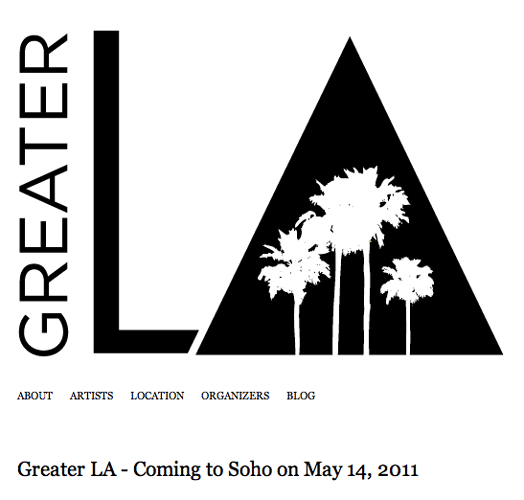
The Greater LA site is up.
Click around, by all means.
April 8, 2011
Ana Serratosa
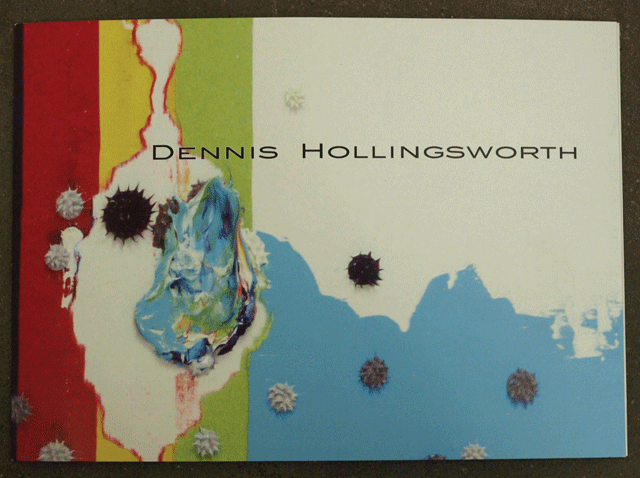
I am honored this week to be presented by gallerist Ana Serratosa in her space in Valencia, Spain. She has produced a brochure for the show, reproduced above and below the fold. Francisco Carpio wrote the essay for the publication, he is a critic for La Raz?n. I will transcribe and translate his text as best as I can in the next few days.

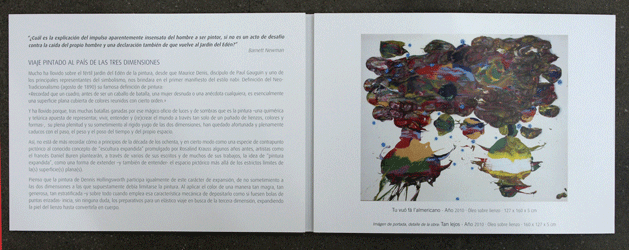

"... too much of a good thing..."

Gaile Robinson wrote an article on the Dallas Art Fair this morning (click on the image for the article). The art fair co-founders Chris Byrne and John Sughrue are mentioned and a bit of background information is provided about the creation of the fair.
April 7, 2011
Binary Hand Dance
Fell down a wormhole called Vi Hart.
(I posted a video earlier that made me think of Joanne Greenbaum.)
Check her out . You won't be disappointed.
It's way beyond my Binary Test Site.
Amazing, inspiring stuff.
Let's dance us some pi...
April 6, 2011
Meanwhile, at the Dallas Art Fair...

My gallery in Los Angeles, Michael Kohn Gallery, is participating in the Dallas Art Fair this year. This fair has a great reputation, so I hear. The previous years were pretty good due to the organizer's ability to bring in the VIP collectors, curators and museum people. My theory is that the key to hosting an art fair depends on inviting the VIP's and treating them like VIP's. Once that's done, everything and everyone will follow. It looks like this is what's happening in Texas.
The painting peeking from behind the Will Cotton is titled "t = r x F", the physics formula for torque, torque equals rotation times force. The title was divined from a blogpost created on or about the time of the creation of the painting. The post was about the apparent difference between our two political parties (Democrats & Republicans) in the USA, and how I believe we are all ultimately united as long as we all have faith in an imagined political center. I related this idea of torque to a kind of pictorial force that drives a composition via the interaction of pictorial elements, each of which have distinctive differences and grind each other through points of contact and juxtaposition. Pictorial harmony comes from a similar agreement in an imagined center, (that vision thing) negotiated in the making of the piece.
April 5, 2011
Ahora
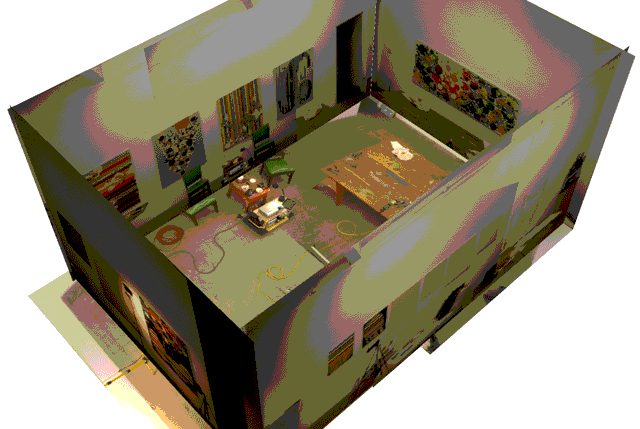
Alright.
This animated gif is giving me a headache... but it's an interesting headache, so I'll leave it here.
Here are some stills to stop my world from spinning:
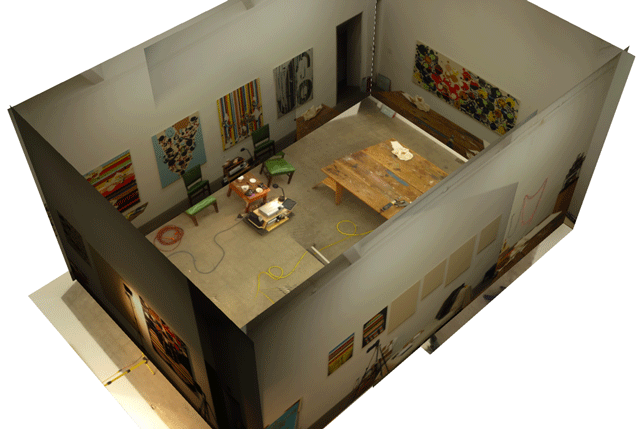
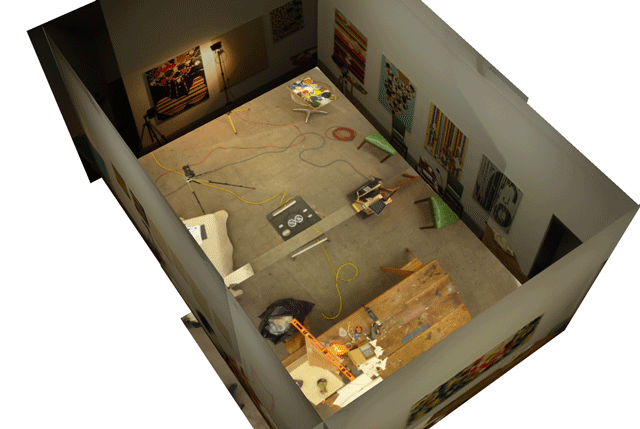
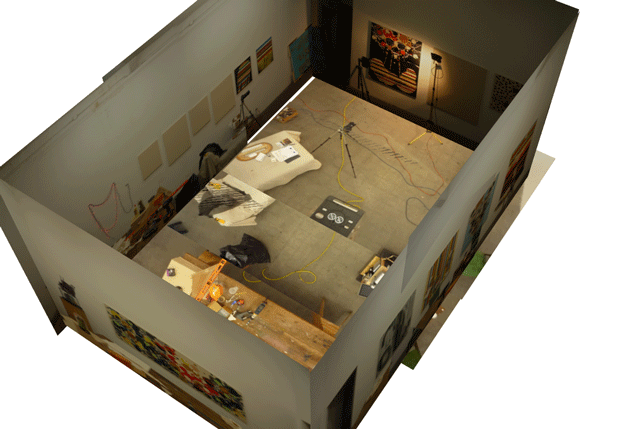
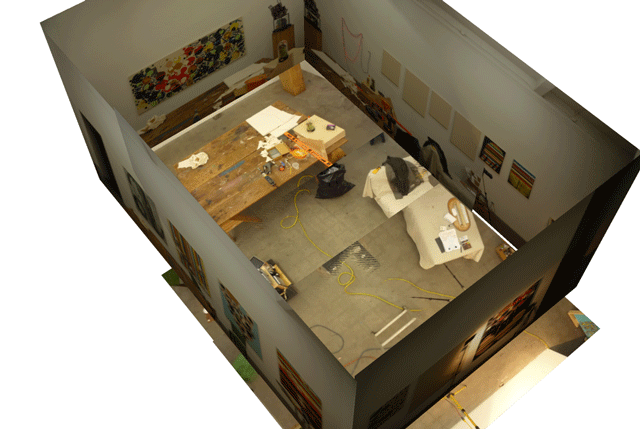
震度0の恐怖
These are the last four stanzas of Keiya Mizuno's poem was posted as part of Global Voices' special coverage Japan Earthquake 2011: Japan: ?The Fear of Magnitude 0″
しかし、月並みではない状況の今だからこそ、大きな意味を持ちます。
僕たちは、これほどの未曾有の大災害を「利用」して
ここで「自分の人生」というものを徹底的に見つめ直すべきなのです。
急がなければなりません。
昨日、渋谷の街には人が溢れ、店は電気を落としながらも通常通り営業していました。
それは、多くの人が待ち望んだ光景ではあったけれど、
同時に、3月11日以降に感じた危機感を忘れ始めているようにも見えました。
同じニュースを繰り返したり、普段通りのバラエティ番組を放送し始めたテレビは、今は一度消してください。
今、見るべきは――「自分」です。――そして、1ヶ月後、3ヶ月後に
被災者の方たちのことを思い出してください。
そのとき、テレビのニュースは彼らを忘れ去っているかもしれませんが、
東京に住む僕たちが東北の方たちのためにできることが、
今より増えているかもしれないからです。
The original poem/blogpost is here. The full poem, translated by Rino Yamamoto, follows below the fold:
The fear of magnitude 0
Straight after the major earthquake, I was about to write an article on my blog
But I couldn?t
Title of the article was
?Emergency theory?
The day the earthquake hit
phone lines in Tokyo went down and text messages couldn?t be received
On top of that, the nuclear plants in Fukushima exploded and rumors spread of radiation reaching Tokyo
and so
People stopped going to work and stayed at home
and more and more people started to flee to KansaiBut
actually at this point in time
there was something absolutely crucial that men in Tokyo should?ve done
That was
To dash to the side of the woman you loveI was dumped once because at the time, I didn?t understand the true meaning of this act
The girl I was dating was having some trouble at work and was feeling down
I was really stressed too because of work
Just then, a friend of mine was going on a trip to Korea for a few days
And luckily, I managed to get those days off work
so
I went to Korea
at the time I thought
I?m too stressed out
if I don?t take a break now, I won?t be able to help her anywayBut when I got back, the first thing she said to me was
?I wanna break up with you??
Thinking she was upset because I was the only one having fun
I desperately started making excuses
?Oh, I didn?t plan anything before I left so we ended up in a random Korean BBQ place! I mean the meat there ? you gotta chew and chew before you can swallow! It?s like rubber I tell you, rubber!?But that wasn?t the reason she was angry
She said
?Someone who leaves your side when you need them the most
Surely will not be there for you in the future either?
And then, the trust that once existed, disappeared foreverThis experience made me realize something
Girls are beings that need someone by their side when they?re troubled
and there is nothing logical about it
all they need is to be ?physically close?So when Tokyo came to a halt for a few days
the act of ?dashing to the side of the woman you love?
would?ve been a razzle-dazzle move to get the attention of the woman you love
And for people that have a wife or partner
?At the time of the earthquake, that guy did this for me?
Would?ve built a strong foundation of trust that would last for decades to come?but, I couldn?t write this article
Because
As the news revealed one by one, the damages caused by this massive earthquake which was so huge
I felt like this article, which in a way tries to turn a negative situation into something positive, would be offensive to a lot of peopleBut
If I had posted this article at the time
it might?ve been able to change the lives of a few guys
Yea, I do think it would?ve been improper and wrong to post this one week ago
But at the same time
communicating ?specific ways? to make someone?s life better
is also one of my reasons for livingSo I want to write here, what can only be written ?now?
11th March
We experienced something we?ve never seen before
It was not only for the people in the North
But even for me in Tokyo
Something for the first time in my entire lifeThe thought that ?I might die? crossed my mind for the first time with the big tremor of the earthquake
We experienced the halt of transportation systems and shut down of phone lines
rice, toilet paper, battery, gasoline were all sold out and our ordinary life quickly crumbled beneath our feet
For days and nights after, Tokyo continued to be shaken by aftershocks
This earthquake, even for the people in Tokyo
must?ve been the closest they?ve come to ?death?But
3 months from now, no, in less than a month
we will be struck againThis time, it won?t be as intense as this disaster
The complete opposite actually ? a gentle wave
But in some cases
it?s powerful enough to make the living, a living-dead
The name of this waveIs?
?Ordinary life?
We will
Forget that one day we shall die
And the fact that ?death? will come suddenly
We will be engulfed in a wave called ?ordinary life?If there was a way to prevent it
the only way would be to make use of ?now??Am I happy with my life now?
?You only live once. Is there anything left undone?
?Is there anything I haven?t done that I would regret?
These ?ordinary? words held no meaning in our usual lives until nowBut
Because the current situation is not ordinary, these words have huge meaning
What we need to do now, is to ?use? this unprecedented disaster
To re-examine ?life?But we must hurry
Yesterday, people filled the streets of Shibuya, and although their lights were dimmed, shops opened as usual
It?s a sight that people had long been waiting for
But at the same time, it felt like they?d started to forget that feeling of urgency that was felt after 11th MarchSo for now, please turn off your TV, showing repeats of the same news and broadcasting the usual programs
?and 1 month from now, 3 months from now
What you need to be looking at now ? is ?yourself?
please remember and think again about the victims of this crisis
By that time, the news may have forgotten about them
But for us living in Tokyo
there may be even more things we can do for the people in the North
(via.
April 2, 2011
Bill Cunningham
Stephanie found this movie online this morning and we discovered that we could see it at a matinee at Pasadena's Laemmle theater if we banged out of the house to catch the movie in 30 minutes flat. We felt so lucky to see it, and so we recommend it to you.
Touching.
Inspiring.
Here's the blurb that came with the YouTube video above:The "Bill" in question is 80+ New York Times photographer Bill Cunningham. For decades, this Schwinn-riding cultural anthropologist has been obsessively and inventively chronicling fashion trends and high society charity soir?es for the Times Style section in his columns "On the Street" and "Evening Hours." Documenting uptown fixtures (Wintour, Tom Wolfe, Brooke Astor, David Rockefeller?who all appear in the film out of their love for Bill), downtown eccentrics and everyone in between, Cunningham's enormous body of work is more reliable than any catwalk as an expression of time, place and individual flair. In turn, Bill Cunningham New York is a delicate, funny and often poignant portrait of a dedicated artist whose only wealth is his own humanity and unassuming grace.
TWO
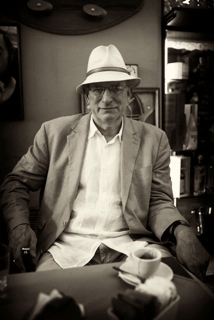
Two (Talisman House)Paul Vangelisti makes his long awaited return to Skylight Books to celebrate a new collection of work.
"In TWO, Paul Vangelisti connects the antipodes of the extraordinary literary geography he has been creating through the course of his numerous previous works. Taken separately or together, the diptych of TWO finds Paul Vangelisti at the height of his poetic, intellectual and philosophical powers. Simply put, there are precious few poets writing now who can match Vangelisti's brilliance"?Dennis Phillips. TWO includes the complete works "Alabaster" and "A Capable Hand, or Maps for a Lost Dog."
Paul Vangelisti is the author of more than twenty books of poetry, as well as being a noted translator from Italian. His new book, Two, was just published by Talisman House, and his translation of Adriano Spatola?s The Position of Things: Collected Poems, 1961-1992, won the Academy of American Poets? Raizzis/de Palchi Book Prize for Translation this past fall. Vangelisti is Founding Chair of the Graduate Writing program at Otis College of Art & Design
